-
Posts
46 -
Joined
-
Last visited
Content Type
Profiles
Forums
Blogs
Gallery
Calendar
Downloads
Posts posted by Skip
-
-
Good to hear you enjoyed the video Steve. It was a bit of a rushed post, I meant to include that I reckon as far as the tail end is concerned you've nailed it!
-
Thanks Steve, the shoulder has turned the corner and is slooooooowly getting better. Lack of sleep has made it hard to get enthused about things, the blogs and particularly that of another Avon builder are great motivation though. About to get back into it.
I've posted a good Avon Sabre walk-around on my blog with a note at which point the tail is shown which you may find helpful.
-
 1
1
-
 1
1
-
-
Today I found this Avon Sabre walk-around video which was only put on Youtube a few days ago, a bit over seven minutes long
@Steve Houghton at 3:18 there begins quite a good slow shot of the fin fairing and then the tailpipe and the rear which you may find helpful.
-
Thanks for taking the time to post the detailed explanation and the photos Steve - very helpful for me.
-
Thanks Nev - that's brilliant!
A great version by AC/DC is this live one ** LINK ** - crowd really into it at River Plate Stadium.
In keeping with the thread topic and something a bit offbeat here's something for the Mozart fans:
-
 2
2
-
-
Thanks for the feedback (so to speak) John, Tim and Martin on the Sultans of Swing video.
I’ve watched it many times and like John it just puts a smile on my face every time.
The guitarist on the right in that video (and also the guitarist in the black shirt in Lindsay’s great post above) is Tommy Emmanuel. Here Tommy does a Beatles medley:
Edited By Skip on 31/01/2021 09:36:06
Edited By Skip on 31/01/2021 09:37:28
-
-
Brian wrote for a quarterly Australian R/C magazine called FlatOut RC which unfortunately only lasted for ten issues and then ceased due to lack of advertising and the work required to produce it.
Brian provided material for the first nine issues before his passing. The “magazine” is still alive in the form of podcasts and videos on their website.
For anyone who would like to read more of Brian’s work Flat Out RC have made available Brian’s nine articles in one pdf file for free on their homepage. The file is 77MB so it may take a while to download. Here’s the link to the file:
I’m not sure how much overlap there may be with articles in other publications such as RCM&E. Although I’ve only flown gliders, like many I still found his articles interesting and entertaining.
The first article in the file is an interview with Brian about how he got into the hobby which I found fascinating, I’ve read it a number of times.
Cheers,
Craig
-
For anyone who hasn’t installed something yet may I suggest considering an infra-red heater.
They run on electricity, they don’t make any noise and depending on the type, the heat you feel is produced from instantly to within 20 minutes after you turn it on.
Infra-red heaters produce that part of the electromagnetic spectrum that you feel when you are standing in the sun regardless of the air temperature. Having the heater off is like standing in the shade on a cold day, turning it on is like moving out of the shade into the sunshine. They heat objects rather than the air so are often regarded as more efficient.
I’ve had experience with them in a warehouse, a workshop for about 40 people and a church situation. The types of applications where it doesn’t make sense to try and heat the air. I’ve also seen them used in smaller settings such as outdoor areas of cafes and restaurants.
The power rating is dependent on the square metres of surface area you want to cover rather than the volume.
They fall into three categories, longwave (or far infra-red), medium wave, and short wave (or near infra-red). Longwave is least efficient as some of the energy heats the air. Short wave is the most efficient (some energy produces light).
If you would like to know more the link below seems to be a good summary from what I know and will open a three page pdf document describing the categories, the heaters and has a diagram of the electromagnetic spectrum to show where infra-red fits in and :
A very cursory search of infra-red heaters in the UK brought up something like this (which are similar to the type I’ve had experience with) however I’m not recommending it by any means:
It’s rated for 6 sq m, which would cover a work bench and its surrounds if you are in say a garage. It can also be portable. Maybe something smaller for a shed?
Prices seem to vary a lot for a given power output however that is probably dependent on whether they are short, medium or long wave.
Stay warm!
Craig
-
For the record I’m in Australia, recently subscribed to RCM&E (rather than buying it in the newsagent), and received the November issue around the 23rd of November. The December/January issue arrived before Christmas. So the magazines are going out and the distribution process here is working.
On the other hand I ordered a canopy from a supplier in the UK a few months ago, it was posted the next day and it took about six weeks to arrive and the box it came in was quite damaged.
I think its luck of the draw at the moment with so much shopping being done online, restrictions in various countries etc. Especially so with Christmas shopping.
Tim/Phil – I’ve noticed that my RCM&E (and Model Airplane News from the US which I also subscribe to) has a return address of Braeside, Victoria, Australia from memory. So it seems the magazine printers/distributors in the UK and the US use the same distributor here in Australia, so there are a few steps in the process. Maybe the same happens in NZ? If so maybe you can work out who it is (RCM&E may be able to tell you?) and follow up with them?
Easy for me to say as my magazines are arriving (MAN was very irregular in the middle of the year though), however may I encourage you to hang in there!
Craig
-
Re the above post:
Neglected to say that Steve told me that he gave me the discount on the price to offset the high mailing costs "only because the canopy was produced for the PSSA UK Mass Build".
-
I’d like to acknowledge the recent help, great customer service and generosity of Steve Davis at Vortex when I ordered my canopy.
The response to my email and then dispatching the order was very fast however the postal services were not so responsive. After four weeks I let Steve know that the canopy hadn’t arrived and could he chase it at his end which he promptly did and was told to give it another week. Straight away and without asking me he gave me a refund and also explained how he had given me a significant discount due to the high cost of mailing the canopy to Australia.
I said that I wanted to bear some of the cost however Steve didn’t want to do that.
Lo and behold the canopy did turn up a week later and I asked Steve to set up another payment for me which he refused to do and said to treat it as an early Christmas present!
If I wasn’t nervous enough thinking about cutting it and attaching it to the fuselage I will be even more so now.
This is how it arrived, there were four “Fragile” stickers on the box, it looks like it went one and a half times around the world rather than just half way (noting that I did cut the tape on the top of the box to open it). The canopy was in perfect condition though! Thanks again Steve.
-
Not much progress to report I’m afraid. Over the last three to four months I have developed what I’m now told is a “frozen shoulder”. It can be quite painful and as the name suggests some movements with that arm are quite restricted.
Its my right shoulder and I’m right handed so some modelling activities have been difficult.
So I have spent a fair bit of time tracking down some things online that will help with the build. The photos in the blogs have been very helpful in showing some tools and techniques that may not necessarily be described in the words in the blogs and they have given me a number of ideas.
I decided to build the fuselage first. So I’ve been looking at how I’ll cut the balsa sheets into strips for the stringers and the planking. I inherited such a device that my father had made some time ago. I’ve been modifying it, more on that soon.
I check the blogs every day, thank you to those who are posting, as a novice it is very helpful.
Craig
-
Like Chris I am returning to the hobby after a few decades and I'm looking at the Spektrum NX transmitters.
This is all very new for me and I could be way off course here however my reading of the Spektrum website for the NX6 is that you need a full suite of Spektrum "Smart" bits to get all the benefits which includes a Smart battery, Avian Smart ESC, AR6610T 6-channel DSMX®/DSM2® receiver (as per Richard A's advice) and the NX transmitter which is described across a number of paragraphs in their NX6 page here ** LINK **
Here are a few sentences from that page:
The NX6 therefore comes ready to provide the advantages of state-of-the-art connectivity and telemetry — just pair it with Spektrum Smart batteries and Smart Avian™ ESCs.
It’s available as a transmitter only (SPMR6775) or packaged with the Spektrum AR6610T 6-channel DSMX®/DSM2® receiver (SPM6775) — which is compatible with Spektrum Avian™ Smart ESCs for experiencing the full benefits of flying "Smart"
The Spektrum™ NX6 comes ready to provide the advantages of state-of-the-art connectivity right out of the box by supporting the innovative, all-in one telemetry of Spektrum™ Smart batteries, ESCs and receivers
Whether you need all those things to get the battery voltage fed back to the transmitter I don't know. As I said this is all new for me and like Chris I'm trying to work it out too! Apologies in advance if this has created any more confusion rather than helping.
Craig
-
Thanks Ade and Chris for your comments, I've done a quick search, there are quite a lot of magnets to choose from and some of them seem quite light as well. More to ponder, decisions to be made ....
Cheers,
Craig
-
Thanks Martin, email received, the usual very fast and helpful response!
If anyone else has ideas for attaching things such as the missiles for display purposes it would be great to hear please.
Thanks also for your comments Chris, it's surprising how many warnings etc. are on the aircraft when you get up close. I think I'll stick to some roundels and the other large markings!
Craig
-
Thank you for the wise advice Martin. My aim is to keep it simple however I would like to also try and get into the spirit of things and add a bit of detail if I can. I'm still trying to decide which scheme, I'm thinking an option is the Sidewinders just for static display (no in-flight release mechanism). Do you have a pdf of these that you could send me please?
A few more photos from my visit:
-
I had the opportunity to photograph some details of a CAC (Avon) Sabre the other day. It is presented in one of the colour schemes that I am thinking of using. The aircraft is at the Historic Aircraft Restoration Museum at Shellharbour Regional Airport, about 100km south of Sydney.
Re visits: the museum states that “Admission includes a guided tour through the premises, which owing to them being “working” hangars, requires an escort. The advantage of this approach is that you will not be hampered by barriers and you will be able to experience the aircraft and other displays in a way that is just not possible elsewhere.”
I got to sit in the cockpit of an F111 C, can’t get much closer than that!
Location - where else would a regional airport in Australia be:
There was a reasonable amount of time to take photos however the tour had to keep moving as it is school holidays at the moment and they were very busy, four people in our tour and a very knowledgeable and enthusiastic (volunteer) tour guide. The guide very kindly took me back into the hangar at the end of the tour so I could take photos of the Sabre, he even held my tape measure for me!
The first lot of photos are of the front of the fuselage and the cannon. Their Sabre is the second one produced, and the first delivered to the RAAF (No. A94-901).
I read somewhere that the cannon baffles were installed in the fuselage to stop surging in the engine when the cannons were fired. Not sure how much detail I'm going to attempt to recreate for these.
A few photos below of the air inlet to get the shape right. The Avon Sabre inlet is about 25% larger than the F86 to get enough air into the Avon engine:
-
Thanks for the detail on the battery box latch Chris (and all the other stuff!). I was also wondering what people have been doing to secure their batteries.
Re your comment about lack of blog activity, I'm new to this so haven't wanted to create unnecessary repetition in my blog or unwanted comments/questions in other's blogs. Still trying to work out the protocols...
Craig
-
Thanks Martin, that's very helpful
-
First daft question. Apologies if this has already been covered and I’ve missed it. I would appreciate it if anyone would please give me some details about the battery they are using (or going to use) in their Sabre. The plan shows a battery well forward in the battery box so I assume you have to include something to secure the battery in place as you build the battery box, as once the box is in the fuselage I can’t see that you can reach that far forward.
Fairly rudimentary stuff, however the last time I put a battery in a model was over 20 years ago, it consisted of four AA size Ni-Cads in a two by two formation jammed into the nose of a thin fuselage.
I assume people are using a LiPo, if anyone has time it would be very helpful to know the S number, mAh, how much air time that might give, the battery shape/style and how they are securing it in the battery box and presumably still allowing it to be removed for charging.
By the way Chris and others, I’m still reading all your blogs!
Thanks.
Craig
-
Thanks Martin, I would be interested in obtaining the drawings of the missiles please, not entirely sure yet if I will include them, however helpful to know what would be involved. A few more decisions to be made prior to that.
Also, do you have a drawing for the location and size of the cannon on each side of the fuselage that you used on the prototype (Avon) version? If so may I obtain a copy of that please? It would be one less thing for me to do!
Craig
-
Thank you everyone for your encouragement.
Phil – I’m aiming for May 2021 (although at the moment I doubt I will be at the Orme), hopefully a bit earlier than May as the slopes I know of here are coastal and work in the summer breezes (around November to March) so maybe by then. Other things to ponder and make decisions on include learning to fly again and what model to use to do that (I’m thinking of some sort of foamie rather than another build) and I need a new radio system, batteries, battery charger etc. So plenty to do before the Sabre gets launched!
Chris – yes lots of decisions, the scheme is a bit down the list at the moment. Thank you for making your torque rod discussion with Phil public, that was very interesting and helpful for me.
Alan – I’m afraid my library of classic aircraft photos over cricket grounds is a grand total of one!
Dirk – your detailed blog is incredibly helpful, I will be using many of your procedures.
David – not sure about the Sidewinders, I see you are making them on your blog. I’m hoping to not add weight and I’m not sure if I want to introduce that extra work/complexity (keep it simple!), however if I choose that scheme I would sort of feel obligated to include them. I’ll keep you posted.
Cheers all,
Craig
Edited By Skip on 24/08/2020 07:26:05
-
Most other Sabre blogs start with their selected colour scheme. I still can’t make up my mind! (I used to be indecisive, now I’m not so sure)
I never thought that I would get to know so much about a plane that I wasn’t originally that interested in. I would like to do a “local” colour scheme and have been looking at Royal Australian Air Force (RAAF) examples. This means that it will be an Avon Sabre although I won’t be doing too much to modify the F-86 kit design. If possible I would like something using straight lines (to match my masking and painting skills). I’m not sure what to do about markings at the moment, the blogs discussing decals etc. are helpful.
I’ve narrowed it down to the following. The first is the 76 Squadron Black Panthers aerobatic team scheme.
The next is 76 Squadron’s Red Diamonds aerobatic team (still with a black panther on the fin though!).
Next is the RAAF’s Aircraft Research and Development Unit (ARDU) scheme used for the Sidewinder missile tests. Straight lines and simple markings so this is good. The red is described as “day glo red”. I don't think I'd include the Sidewinders though (a bit complicated).
The first image is the best colour one I can find, it’s a slightly earlier version of the scheme, the black and white photos show the tail is nearly all red.
Melbourne Cricket Ground in the background
Lastly, the one that really caught my eye is the one below. Alas it was never operational and never flew and so I guess it doesn’t really meet the scale criteria (however it is very tempting). It does have an amusing story behind it though. Three men from the Royal Australian Navy were sent on a RAAF “surface finishers” (aircraft painting) course in the early 1980s. The sailors were given a decommissioned Sabre on which to put their new skills into practice and they chose to do the Navy’s VC 724 Squadron’s colours of the time. Once finished they parked it in a place where lots of people would see it. The photo and a somewhat tongue-in-cheek article appeared in “Navy News” and apparently the ex Sabre pilot RAAF Officer Commanding at the base was “far from impressed”! The scheme is also shown below on the Navy VC 724 Squadron Macchi trainers in service at that time.
Full story here:
I think these are the Navy painters:
Macchi trainers in the scheme:



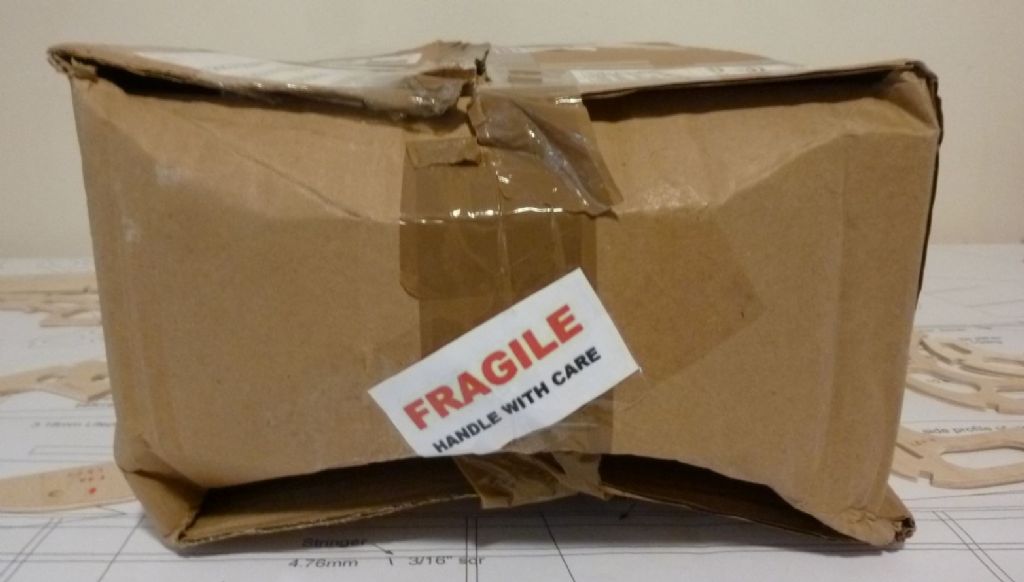






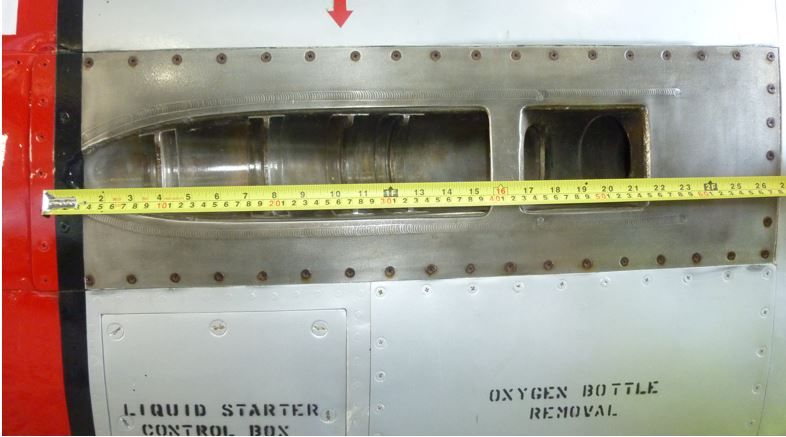
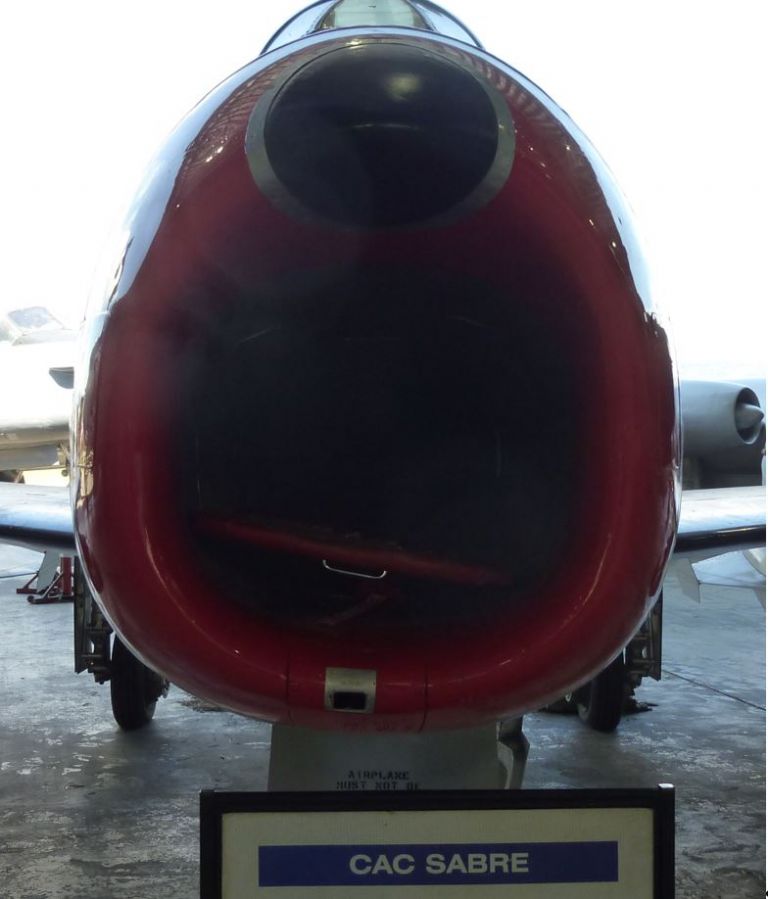


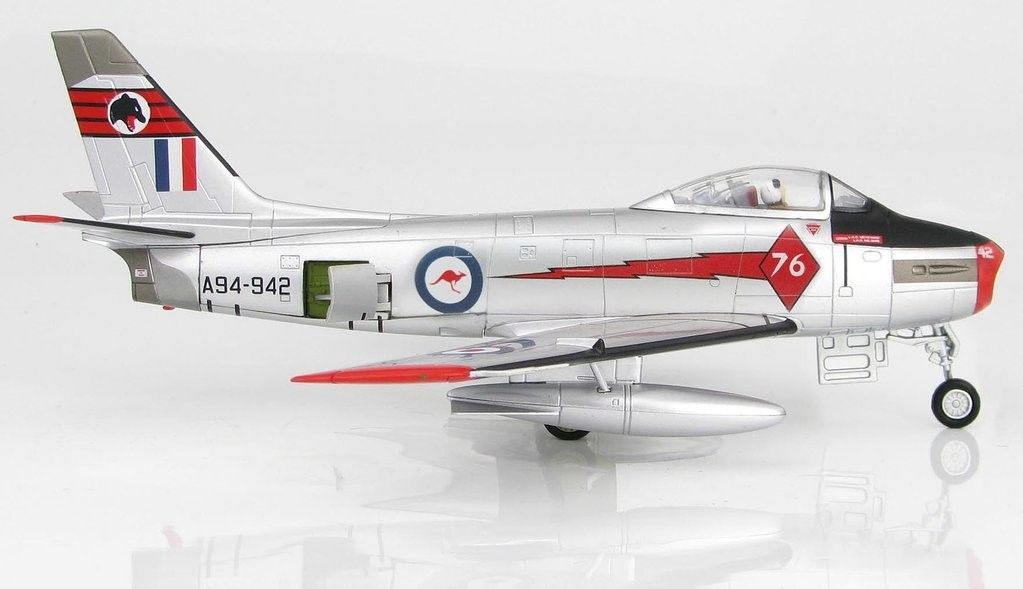
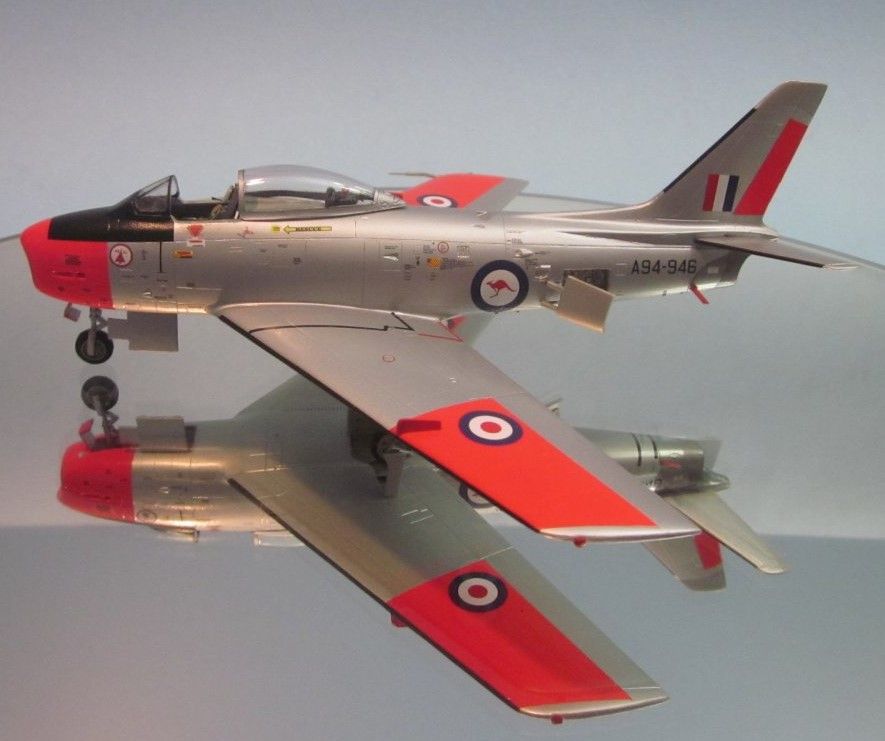

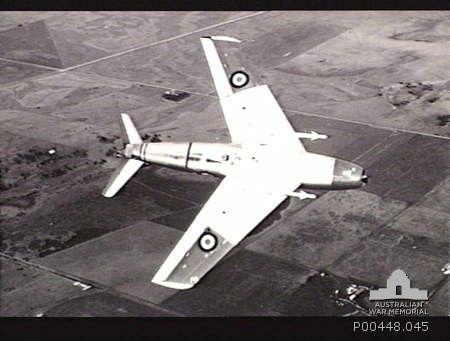
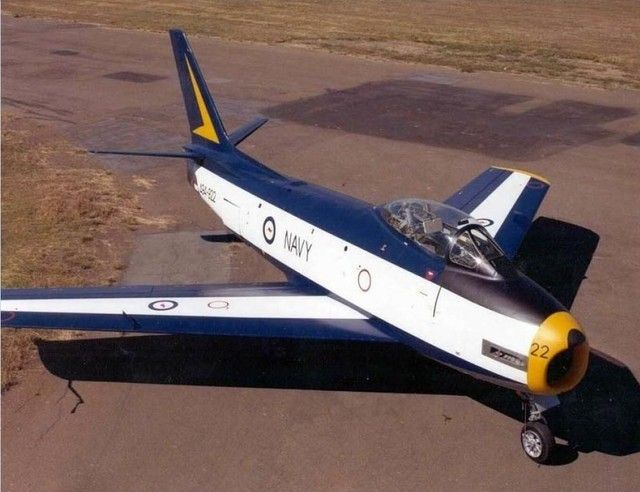
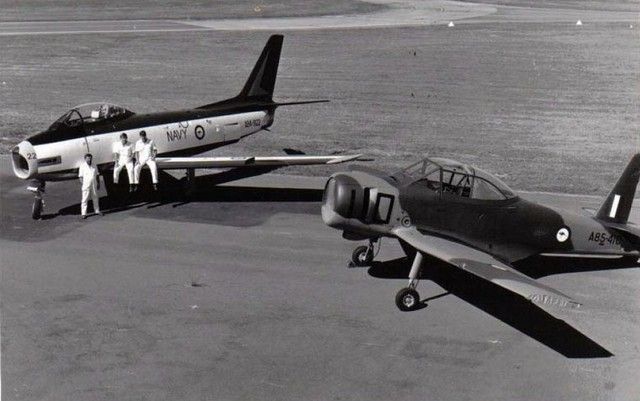


Two old boys mucking about with guitars
in Chit-chat
Posted
Somehow came across two old Status Quo boys playing with an orchestra and thought of this thread (apologies if already posted, a number of the videos are blacked out for me as they are in breach of copyright in my region):
https://youtu.be/SWBRcWDsHkk?t=74
(got a message saying that youtube won't allow embedding of this video, hopefully the link will work if you want to follow it)